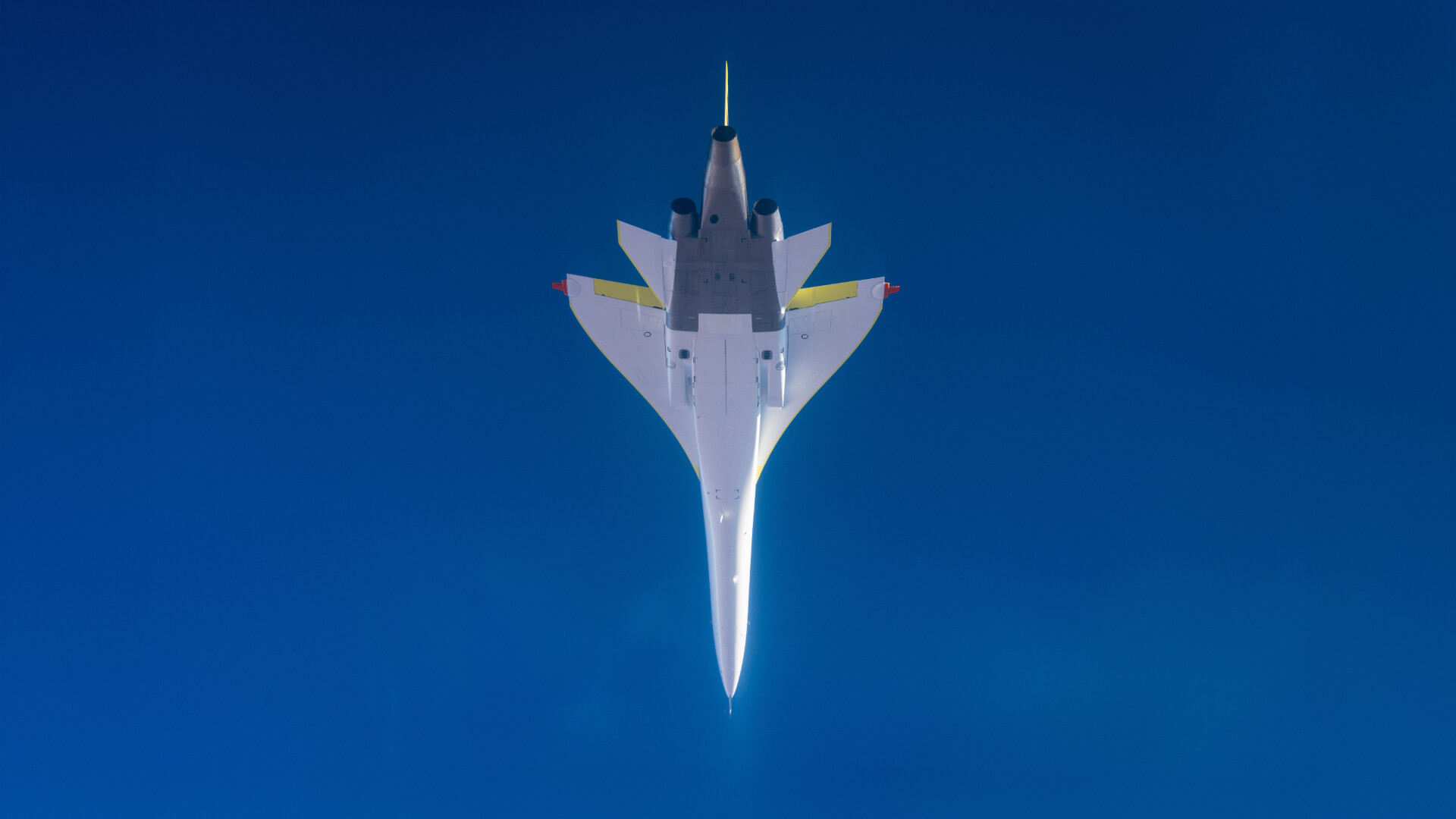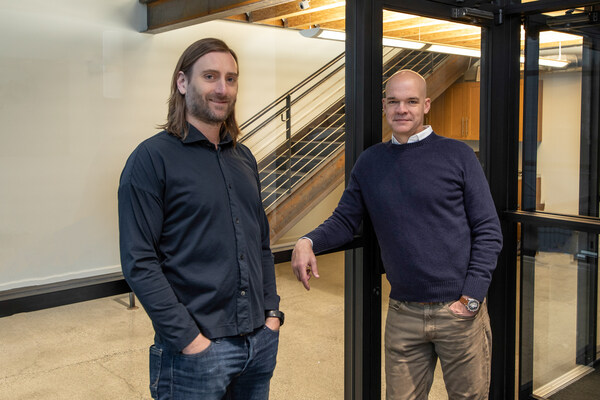Insider Brief
- Boom Supersonic’s XB-1 became the first privately funded aircraft to exceed Mach 1, reaching supersonic speeds over the Mojave Desert during a test flight.
- The XB-1 test program validated key technologies, including an augmented reality vision system, digitally optimized aerodynamics, carbon fiber composites, and supersonic engine intakes—advancements that will be incorporated into Boom’s planned commercial airliner, Overture.
- Boom Supersonic has secured 130 orders and pre-orders for Overture from major airlines and completed its Superfactory in Greensboro, North Carolina, with plans to produce up to 66 aircraft annually.
Boom Supersonic’s XB-1 is now the first privately funded airplane to break the sound barrier when it pushed above Mach 1 over the Mojave Desert, Reuters reports. The plane soared to 35,000 feet (10,670 meters) — and seemed to like the experience of traveling faster than the speed of sound.
“She was real happy supersonic,” Boom Chief Test Pilot Tristan “Geppetto” Brandenburg said after the flight, in a video posted by Boom Supersonic. “That’s the best she’s ever flown, was supersonic.”
According to Brandenburg, he guided the craft to the appropriate altitude before opening up the test plane’s throttles, pushing the craft to Mach 1.1, or about 845 mph (1,360 kph). Not lost on the pilot or ground crew: this was the same area where pilot Chuck Yeager — in his similarly named Bell X-1 — famously broke the sound barrier for this first time.

“XB-1’s supersonic flight demonstrates that the technology for passenger supersonic flight has arrived,” said Boom founder and CEO Blake Scholl, in a statement on the company’s website. “A small band of talented and dedicated engineers has accomplished what previously took governments and billions of dollars. Next, we are scaling up the technology on XB-1 for the Overture supersonic airliner. Our ultimate goal is to bring the benefits of supersonic flight to everyone.”
After its first flight in March 2024, the XB-1 underwent a series of 11 progressively complex test flights with a human pilot, assessing its systems and aerodynamics under varied conditions. Throughout the campaign, the team gradually pushed the aircraft’s performance limits, transitioning from subsonic to transonic and eventually supersonic speeds, prioritizing safety while making calculated advances.
For many, the flight represents more than a test of an airframe — It’s been almost two decades since supersonic commercial air travel was viable.
“I’ve been waiting over 20 years for the return of supersonic speeds, and XB-1’s historic flight is a major landmark towards my dreams being realized.,” said Mike Bannister, former Chief Concorde Pilot for British Airways. “When I last flew Concorde in 2003, I knew this day would come. Boom is well on its way towards making sustainable supersonic flight a reality, aboard Overture—my #1 choice as a successor to Concorde. Congratulations to Blake Scholl, all at Boom and especially its pilot, Tristan ‘Geppetto’ Brandenburg. Having been Concorde’s Chief Pilot I envy his role in this exciting return towards mainstream supersonic flight.”
First Flight, First Step
For Boom Supersonic, this flight of the XB-1 is just the first step in a plan to develop a supersonic airliner that is commercially viable. That craft, called the Overture, would be capable of carrying 64-80 passengers across the Atlantic in about 3-1/2 hours.
Some facts about Boom Supersonic’s Overture aircraft: It is designed to cruise at Mach 1.7, making it twice as fast as conventional airliners over water and 20% faster over land. The aircraft is projected to serve more than 600 profitable routes worldwide. Overture is fully compatible with sustainable aviation fuel (SAF). It measures 201 feet from nose to tail and has a cruising altitude of 60,000 feet. The aircraft has a maximum range of 4,250 nautical miles (4,888 miles or 7,867 kilometers) and is designed to carry between 64 and 80 passengers.
Overture is powered by the Symphony engine, a purpose-built turbofan optimized for supersonic flight, delivering 35,000 pounds of thrust, according to the company. Designed for efficiency and durability, Symphony offers 25% more time on wing and 10% lower operating costs compared to derivative engine approaches. The engine features a 72-inch fan with hollow-core fan blades and a medium bypass ratio to balance performance and efficiency. It is designed to meet ICAO Chapter 14 noise levels and is fully compatible with up to 100% sustainable aviation fuel (SAF). Advanced additive manufacturing techniques are used in its production, and it complies with FAA Part 33 and EASA CS-E certification standards.
XB-1’s Foundational Flight
XB-1 provides the foundation for Overture, according to the company which added that it validated key technologies. Technologies proven through XB-1’s test program that will also apply to Overture, according to Boom Supersonic include:
- Augmented reality vision system: Due to their long noses and high takeoff and landing angles, pilots of both XB-1 and Overture face limited forward visibility when approaching the runway. Instead of relying on a mechanically adjustable nose, as seen on the Concorde, both aircraft utilize an augmented reality vision system to enhance runway visibility while minimizing weight and mechanical complexity.
- Digitally optimized aerodynamics: Engineers employed computational fluid dynamics (CFD) simulations to evaluate thousands of potential XB-1 designs, refining the aircraft for stability during takeoff and landing while maximizing efficiency at supersonic speeds. The same CFD-driven design process plays a critical role in the development of Overture.
- Carbon fiber composites: The primary structural material for both XB-1 and Overture is carbon fiber composite, which enables an aerodynamically advanced, lightweight, and durable aircraft design.
- Supersonic intakes: XB-1’s engine intakes are engineered to slow incoming supersonic airflow to subsonic speeds, converting kinetic energy into pressure energy for efficient jet engine performance across all flight phases. The knowledge gained from XB-1’s specialized intake design is directly informing Overture’s Symphony turbofan engine and its integration into the aircraft’s supersonic propulsion system.
The company indicates that Overture has an order book of 130 orders and pre-orders from American Airlines, United Airlines, and Japan Airlines. Boom finished Overture Superfactory in Greensboro, North Carolina in 2024, with plans to scale to produce 66 Overture aircraft per year.
Share this article:










